A study published in the forthcoming issue of the European Respiratory Journal (ERJ), has for the first time claimed a concrete link between exposure to nanoparticles in adhesive paint and development of severe pulmonary fibrosis in a group of young female workers; two of whom went on to suffer fatal lung failure.
Aug 19th, 2009
Read more
Naturally occurring organic matter in water and sediment appears to play a key role in helping microbes convert tiny particles of mercury in the environment into a form that is dangerous to most living creatures.
Aug 18th, 2009
Read more
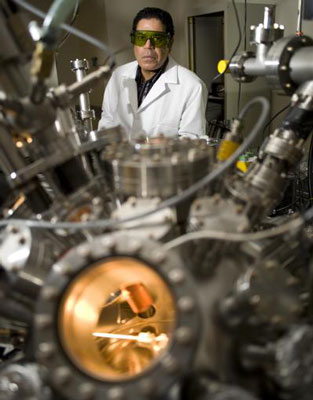 Researchers are adapting the same methods used in fusion-energy research to create extremely thin plasma beams for a new class of nanolithography required to make future computer chips.
Researchers are adapting the same methods used in fusion-energy research to create extremely thin plasma beams for a new class of nanolithography required to make future computer chips.
Aug 18th, 2009
Read more
 A young Berkeley Lab and University of California, Berkeley scientist has been recognized by Technology Review magazine as among the world's top innovators under age 35.
A young Berkeley Lab and University of California, Berkeley scientist has been recognized by Technology Review magazine as among the world's top innovators under age 35.
Aug 18th, 2009
Read more
'A biologist, a physicist, and a nanotechnologist walk into a ...' sounds like the start of a joke. Instead, it was the start of a collaboration that has helped to decipher a critical, but so far largely unstudied, phase of how cells divide.
Aug 18th, 2009
Read more
Data released today by the Project on Emerging Nanotechnologies (PEN) highlights more than 1,200 companies, universities, government laboratories, and other organizations across all 50 U.S. states and in the District of Columbia that are involved in nanotechnology research, development, and commercialization.
Aug 18th, 2009
Read more
NanoEurope is, since 2003, the premium annual European symposium on selected areas of nanotechnology research, development and commercialization of industrial applications. Submit your poster contribution. Don't miss this unique opportunity. Present breaking results, ongoing research projects, and speculative or innovative work in progress.
Aug 18th, 2009
Read more
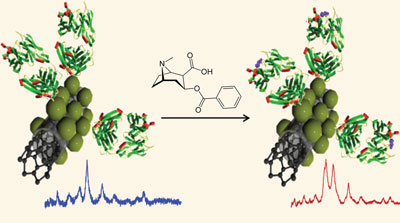 Spanish scientists have made antibody-coated nanoparticles that can detect bioanalytes indicative of drug abuse.
Spanish scientists have made antibody-coated nanoparticles that can detect bioanalytes indicative of drug abuse.
Aug 18th, 2009
Read more
Virtuelle Proteinforschung und eine Datenbank fuer biochemische Reaktionen.
Aug 18th, 2009
Read more
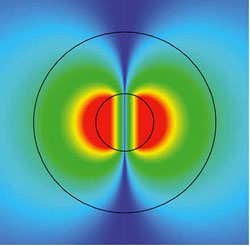 Researchers have modified nanoparticles known as 'Cornell dots' to make the world's tiniest laser - so small it could be incorporated into microchips to serve as a light source for photonic circuits.
Researchers have modified nanoparticles known as 'Cornell dots' to make the world's tiniest laser - so small it could be incorporated into microchips to serve as a light source for photonic circuits.
Aug 18th, 2009
Read more
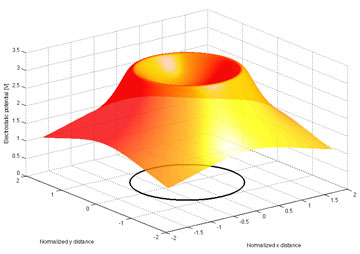 A chemist at the University of Wisconsin-Milwaukee has developed a kind of invisible fence for trapping and controlling particles as small as a single virus or large protein.
A chemist at the University of Wisconsin-Milwaukee has developed a kind of invisible fence for trapping and controlling particles as small as a single virus or large protein.
Aug 18th, 2009
Read more
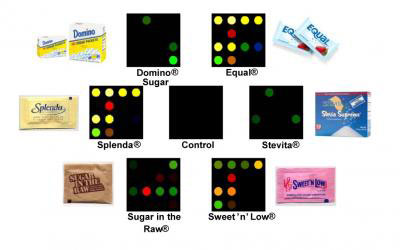 In a new approach to an effective 'electronic tongue' that mimics human taste, scientists in Illinois are reporting development of a small, inexpensive, lab-on-a-chip sensor that quickly and accurately identifies sweetness.
In a new approach to an effective 'electronic tongue' that mimics human taste, scientists in Illinois are reporting development of a small, inexpensive, lab-on-a-chip sensor that quickly and accurately identifies sweetness.
Aug 17th, 2009
Read more
Scientists have copied the natural glue secreted by a tiny sea creature called the sandcastle worm in an effort to develop a long-sought medical adhesive needed to repair bones shattered in battlefield injuries, car crashes and other accidents.
Aug 17th, 2009
Read more
Magnetic nanoparticles have been used to bring stem cells to sites of cardiovascular injury in a new method designed to increase the capacity of cells to repair damaged tissue.
Aug 17th, 2009
Read more
It appears that bacteria can squeeze through practically anything. In extremely small nanoslits they take on a completely new flat shape. Even in this squashed form they continue to grow and divide at normal speeds.
Aug 17th, 2009
Read more
Utilizing fractal patterns similar to those created by lightning strikes, Victor Ugaz, associate professor in the Artie McFerrin Department of Chemical Engineering at Texas A+M University, has created a network of microchannels that could advance the field of tissue engineering by serving as a three-dimensional vasculature for the support of larger tissue constructs, such as human organs.
Aug 17th, 2009
Read more







 Subscribe to our Nanotechnology News feed
Subscribe to our Nanotechnology News feed